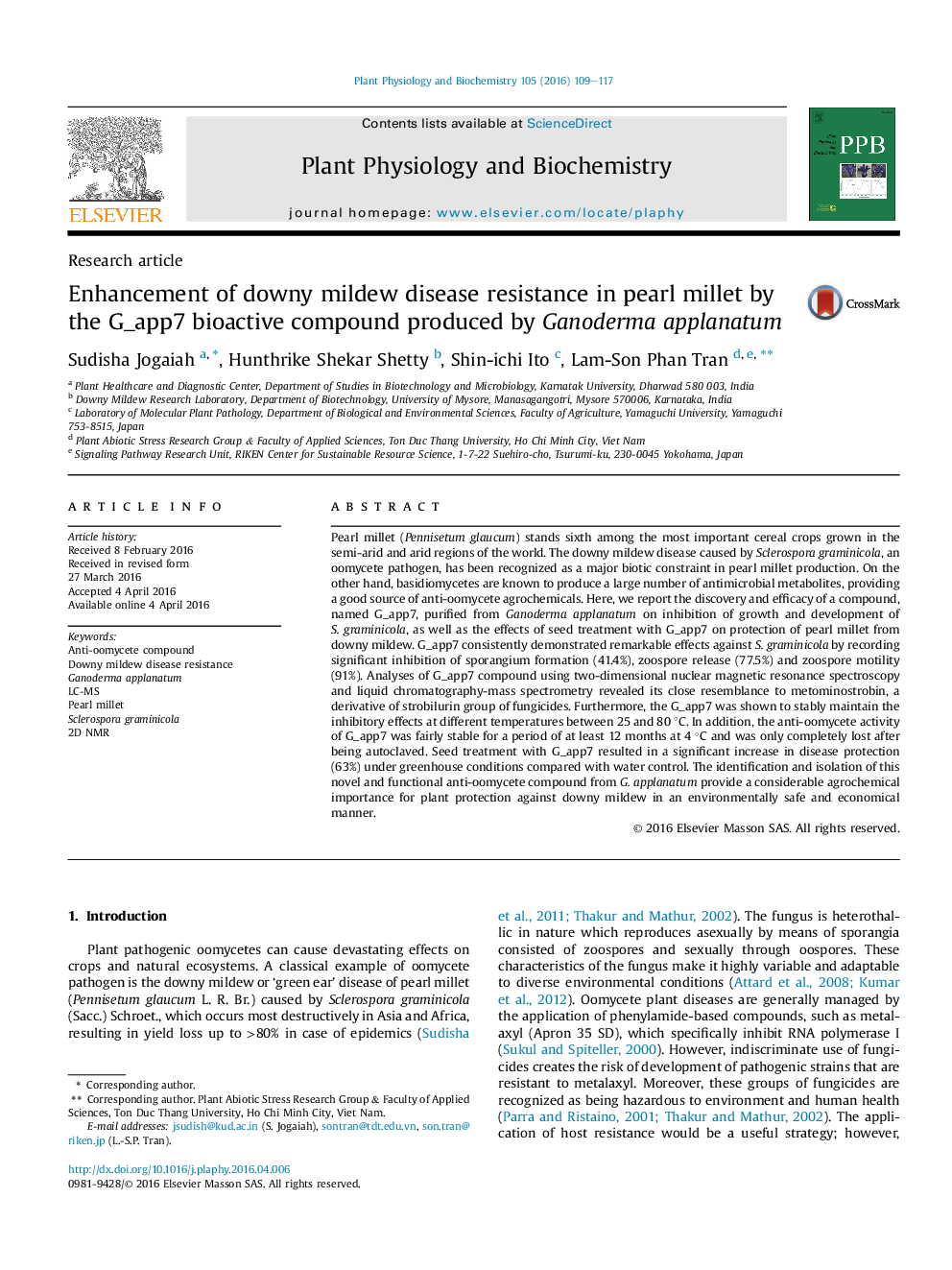| کد مقاله | کد نشریه | سال انتشار | مقاله انگلیسی | نسخه تمام متن |
|---|---|---|---|---|
| 2015526 | 1541916 | 2016 | 9 صفحه PDF | دانلود رایگان |

• A novel compound named G_app7 was isolated from Ganoderma applanatum.
• G_app7 displayed anti-oomycete activity similar to strobilurin-like compounds.
• Enhanced disease protection was noted for the G_app7-treated pearl millet plants.
• G_app7 exhibited a remarkable thermal stability and shelf life for at least 12 months.
Pearl millet (Pennisetum glaucum) stands sixth among the most important cereal crops grown in the semi-arid and arid regions of the world. The downy mildew disease caused by Sclerospora graminicola, an oomycete pathogen, has been recognized as a major biotic constraint in pearl millet production. On the other hand, basidiomycetes are known to produce a large number of antimicrobial metabolites, providing a good source of anti-oomycete agrochemicals. Here, we report the discovery and efficacy of a compound, named G_app7, purified from Ganoderma applanatum on inhibition of growth and development of S. graminicola, as well as the effects of seed treatment with G_app7 on protection of pearl millet from downy mildew. G_app7 consistently demonstrated remarkable effects against S. graminicola by recording significant inhibition of sporangium formation (41.4%), zoospore release (77.5%) and zoospore motility (91%). Analyses of G_app7 compound using two-dimensional nuclear magnetic resonance spectroscopy and liquid chromatography-mass spectrometry revealed its close resemblance to metominostrobin, a derivative of strobilurin group of fungicides. Furthermore, the G_app7 was shown to stably maintain the inhibitory effects at different temperatures between 25 and 80 °C. In addition, the anti-oomycete activity of G_app7 was fairly stable for a period of at least 12 months at 4 °C and was only completely lost after being autoclaved. Seed treatment with G_app7 resulted in a significant increase in disease protection (63%) under greenhouse conditions compared with water control. The identification and isolation of this novel and functional anti-oomycete compound from G. applanatum provide a considerable agrochemical importance for plant protection against downy mildew in an environmentally safe and economical manner.
Figure optionsDownload as PowerPoint slide
Journal: Plant Physiology and Biochemistry - Volume 105, August 2016, Pages 109–117